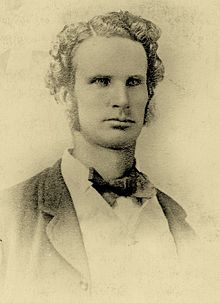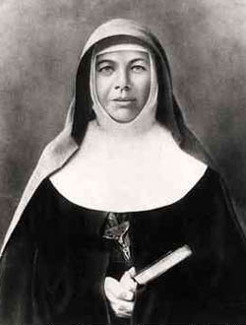The Mount Gambier region is a kaleidoscope of history and culture.
Fascinating reminders of the region’s rich history are waiting to be discovered around every corner. Allow plenty of time to unravel the twists and turns of history that created the fabric of our community today.
Australia is an ancient land,
and home to the most ancient culture on earth.
The Boandik people – are the first nations peoples of the Mount Gambier region. Their Country includes the coastal area from the south of Robe to the area around the mouth of the Glenelg River at Nelson, Victoria. The Bunganditj language is the reclaimed language of the Boandik people. The name Bunganditj comes from Bung-an-ditj or “people of the reeds”, reflecting the nature of the original landscape.
Shell middens, rock shelters, and burial grounds are scattered throughout the area. Until 5,000 years ago, the Bunganditj lived near sandy beaches and tidal estuaries, consuming large amounts of available shellfish, many of which no longer exist, as the beaches have given way to cliff-top dunes. The wood from sheoaks and other trees was used to produce digging sticks, boomerangs, throwing sticks and other tools. Stone axes and cutting implements were made from Port MacDonnell flint.
The Boandik peoples lived in the region for at least 50,000 years, before the invasion of their lands in 1840 by European settlers. Europeans introduced diseases and rapidly altered the environment to suit European farming practices. These events caused a rapid decline of the Boandik population.
Source: University of South Australia (provided by representatives of the Boandik people)
The European history of Mount Gambier and surrounding areas is extraordinary. The untamed Southern Ocean crowns the coastline as home to the most shipwrecks in Australia and throughout our region you will find museums, plaques and monuments to telling the stories of tragedy and bravery. Stand on the cliffs on North Cumberland or the headland of Beachport and you will feel the power of the Ocean and understand the terror of the passengers and crew as there boats collided with hidden reefs off shore.
Not all stories are of hardship, the tales of the poet and his antics are infamous, and don’t miss the tale of the car in the lake that refused to die. Where else can you follow the steps of a saint, Australia’s first poet and a Father who were all great friends with their own tales to tell?
EXPLORERS & SETTLERS
From Dreamtime to Settlement
The Traditional Custodians of the land in which Mount Gambier lies are the Boandik people, and the first known European sighting was recorded in 1800 when Lieutenant James Grant spied the distinctive mountain from the deck of HMS Lady Nelson.
Images reflecting Boandik Dreamtime stories of the region’s ancient past are projected onto buildings in a captivating evening light show at the Cave Garden/Thugi precinct, while a self-guided walk visits 32 state or local heritage-listed buildings harking back to the early days of white settlement.
Take a self-guided tour of the city’s 140-year-old public cemetery, pointing out plots of significance and those with a poignant story attached.
Key Figures of Mount Gambier

Adam Lindsay Gordon an Australian poet, horseman, politician and was the most colourful of characters. He is the only Australian poet to have a bust in Poet’s Corner at Westminster Abbey, On the outskirts of Port MacDonnell in the Dingley Dell, scrubland sits the cottage once owned by the bush balladeer.
Visit the cottage and enjoy a guided tour that will reveal original Gordon relics with impromptu poetry recitals along the way.

Julian Tenison Woods Fr Julian was not only a man of faith, a priest of God, but was also a scientist, explorer, author. Father Tenison Woods spent 10 years in the Mount Gambier area, and as you will discover he left a lasting impact on the community and the area at large.
With Mother Mary MacKillop he helped to found the Sisters of St Joseph of the Sacred Heart at Penola in 1866. Throughout the region his story is recorded, from the Tennison Woods College to the Father Woods Park.

Port MacDonnell was also the departure point for Australia’s first Saint, Mary Mackillop; in June 1867, she boarded the steamship SS Penola bound for Adelaide, in a bid to share revolutionary Catholic teaching principles further afield.
Mary’s journey to sainthood is the focus of a self-drive trail exploring 16 sites of significance in Portland, Hamilton and Penola.
Penola has its own heritage walk in addition to the popular Saint Mary MacKillop Interpretive Centre. The walk explores town life since settlement in 1850 by Scottish-born pastoral pioneer Alexander Cameron, and the history-laden Petticoat Lane, with its barely changed streetscape and too-cute cottages, is one of the highlights.
SEE HISTORY UNFOLD
Museums
To truly understand the Mount Gambier area, you need to understand its history. The many volunteer-run museums are a great source of interesting historic information about local people and places. Whether you are interested in the seafarers, the establishment of the sheep industry or the history of wine making, Mount Gambier region provides many options to learn and reflect on the past.
This fascinating 1865 Court House incorporates local history, past law records and photographic representations of past events.
A limestone and dolomite building with original courtroom furniture.
Take time out and sit in the jury box, view the judge’s chambers and inspect the cells. The Old Courthouse is even available for use for mock courts and events.
The Old Courthouse is also the home of the local Art Society, where visitors can chat with local artists and purchase local art, jewellery and pottery.
Adam Lindsay Gordon’s Cottage. Home of Adam Lindsay Gordon from 1864-67.
This quaint cottage displays the works and personal effects of Adam Lindsay Gordon, Australia’s first poet and horseman extraordinaire. Take a short walk through Dingley Dell Conservation Park to see an abundance of wildlife.
Allow plenty of time to explore this museum. The displays include more than 60 fully restored horse-drawn vehicles and a costume collection representing over a century of Australian fashion are among the impressive features.
Port MacDonnell Maritime Museum further expands on the region’s seafaring past. Port MacDonnell was once the South Australia’s second largest trading port. Learn about the over 30 tragic shipwrecks along the rugged local coast.
Forestry is a major industry for the South East region of South Australia. This museum showcases the days gone by and the legacy of forestry in the region.
Located in Penola, this centre tells the story of Mary’s whole life, with a focus on the Penola years, and also the century-long process that culminated in her canonisation. There is also a display that covers Julian Tenison Woods’ 10 year spent in the district of Penola.
Built in 1863, tells the story of the historic blade shearing and wool handling processes of early pioneer pastoralists. The shed is unique as it was never converted to mechanised shearing and it has now been converted into a museum of original and historic blade shearing and wool handling processes.
